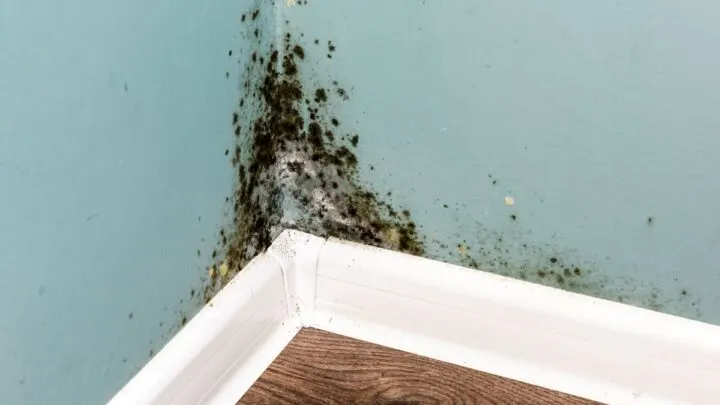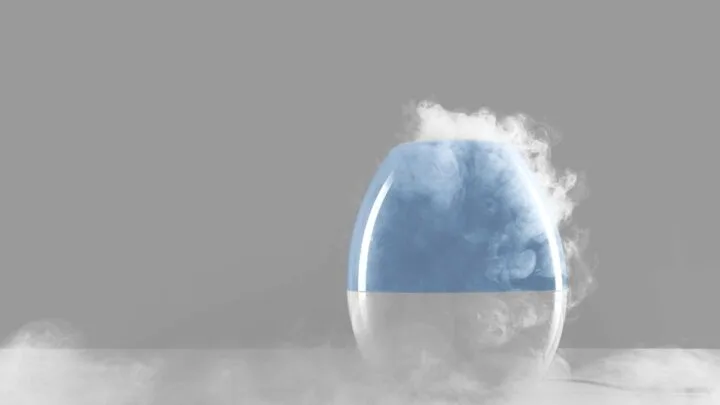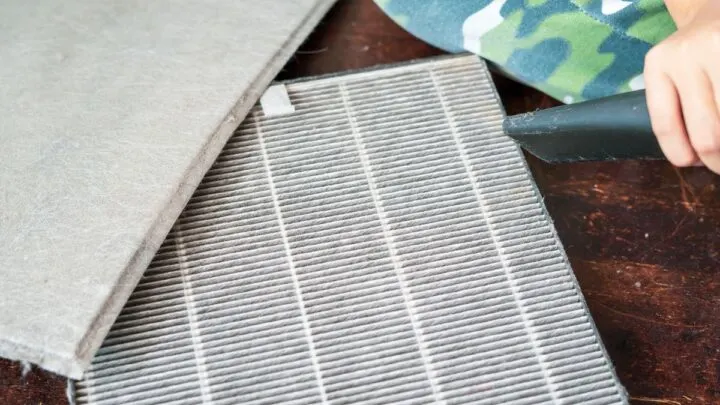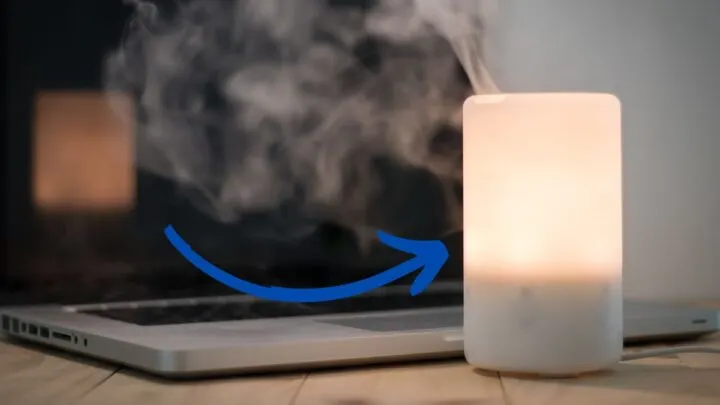Do you love using humidifiers in your home to have overall good health?
Humidifiers might appear to be a useful product but have you ever thought about what drawbacks they have?
Unfortunately, humidifiers can promote the growth of mold, but only when they are used carelessly. Even though you don’t see dangerous mold spores on your humidifier’s interior surfaces, over time they can still cause mold poisoning.
Generally, mold growth takes place when the humidity level increases to 55%.
Therefore, it is suggested to manually control your humidifier to prevent the dangers of mold growth.
There are a plethora of ways to stop mold from growing, but leveraging a humidifier stands out because it is so effective at preventing the spread of fungi in the air.
Isn’t it interesting that humidifiers cause its growth and they are also accountable for reducing their growth? Let’s find out how.
But before proceeding, let’s take a look at what molds are and how humidifiers can increase their growth.
What Exactly Is Mold?
Mold is a filamentous fungus made up of tiny organisms that are virtually widespread.
They can be any color, including purple, green, black, or orange.
Molds that grow outdoors are crucial to the natural world because they decompose dead plants, leaves, and trees.
Damp building materials can contain mold, which can be found in a variety of colors and typically takes the form of stains.
Mold can result in poor air quality if you allow it to blossom in your workplaces or homes. Some molds, such as dry rot fungus and Serpula Lacrymans are harmful and destructive.

What Triggers Mold Growth In Homes?
It is challenging to single out one good reason why mold can grow in homes among the many possible causes.
The following situations could lead to or assist in the growth of mold in your home:
- Moisture like humidity or water leakage
- Darkness
- Spores of molds
- Darkness
- Warmth as molds usually grow in warmer temperatures and can not survive temperatures below freezing
Furthermore, if the circumstances allow, the majority of molds can start to grow in as little as 24 to 48 hours.
You should also be aware that moisture is a crucial element that can encourage the growth of this harmful fungus.
What A Humidifier Can Do To Promote Mold Growth
So now you know that humidifiers have the potential to trigger the growth of molds in your home, let’s find out what exactly they do that could end up with your home being covered in them.
Most of the time, you might start to notice the growth of mold in your home if the weather has been particularly humid or if it starts to rain for several days in a row.
Due to the moisture, many walls, benches, and other surfaces frequently start to develop mold over time.
Therefore, you shouldn’t be surprised if mold growth develops in your home or office regularly if the moisture level there is above the recommended level, which is 55%.
Similarly, many people use humidifiers in their households that exceed the recommended humidity levels.
This would result in an excessive amount of moisture or wetness, which can cause mold to begin overgrowing on porous surfaces like window sills, walls, etc.
Mold can also grow as a result of improper maintenance of humidifiers. This happens when the majority of people don’t wipe down their humidifiers according to the instructions in the owner’s manual.
If you belong to this category, then you are simply allowing mold and other harmful microorganisms to thrive in your humidifier.
Additionally, if mold develops within a humidifier and you still use it anyway, it will quickly contaminate the air, jeopardizing the safety of you and your loved ones.

How To Identify Mold In Your Humidifier
While ensuring that the humidity levels do not exceed 55% is easy, the sneaky mold growing inside humidifiers can be hard to follow up on.
But fret not as the following points are all you need to know to identify these pesky mold growths inside your humidifier.
First and foremost, check out the water compartment and any outings that release water vapor as where there is wetness, there is a probability of mold growth. But here is the tricky part.
Molds growing inside a humidifier aren’t like your typical molds growing inside your homes or in the outdoors, and therefore they can be very hard to detect.
They are not green or black in color. More often than not, they’re white or pink in color!
So, around these water regions, mold may be present if you observe any strange colors or accumulation.
But, if there is just a little amount, this mold might not be apparent to the human eye.
However, what you can do is look out for any musty smells or visible mold around the area where the humidifier is kept as materials such as rugs or walls beneath and surrounding the unit are prone to mold spores attaching themselves to them.
Similarly, if you notice any musty smells, like that of a basement, from the humidifier or room, especially when it is switched on, it most probably is due to mold growth in it.
As it can be hard to detect them, it is best to thoroughly clean your humidifiers regularly as not doing so can lead to mold growths even when you don’t see any signs.
What Is The Recommended Method To Use A Humidifier To Prevent Mold Growth?
Molds and similar microbes as mentioned above can be removed using a humidifier. However, if you don’t use it appropriately, it can have adverse results.
Here is a guide on how to use your humidifier in the correct way:

Clean Your Filters Regularly
A dirty humidifier does more bad than good. As explained above, if your filters are not cleaned, they can help in the production of germs, mold and other microbes.
Such microorganisms are released into the air when the humidifier is used.
To avoid this issue, you must thoroughly clean the filters, tank and interior of the humidifiers. A simple wash and rinse cycle is enough to clean up all the bacteria build-up.
Lastly, make sure to dry the moist parts of your humidifier as well.
Lower The Humidity Levels
A humidity level above 55% provides a good environment for the molds to grow in.
Therefore, whenever you use a humidifier, it is advised to set the humidity level lower than 55%.
A digital hygrometer allows you to monitor the humidity levels at your offices and home. This will allow you to maintain the correct level without the growth of molds.
Furthermore, many researchers recommend a level between 30-50% that is relative to the humidity level of your environment.
Why Use a Humidifier?
Humidifiers keep the air in your home damp instead of dry, which is healthier for most people. If someone has a problem with their sinuses or airways, a humidifier can help with these problems.
A lot of the time, dry air is unhealthy and damp air is healthy. Humidifiers can benefit people who experience any of the following:
- Dry skin
- Allergies
- Eye irritation
- Dry throat or airways
- Cracked lips
- Headaches from sinus problems
- Nosebleeds
- Coughing
Other Advantages of Humidifiers
Humid air is healthier than damp air, so it might even prevent contagious diseases or reduce their severity. Research shows that humidity may prevent the flu by deactivating virus particles in the air.
A dry cough can be bad because it doesn’t expel anything from the lungs. Humid air makes coughing more effective, helping you get better faster. Humid air can also reduce snoring, plus keep your skin and hair moist.
Humid air is also healthier for houseplants, which will look better and more vibrant. Your wallpaper and even your wood floors may last longer if you use a humidifier.
Temperature Differences Create Condensation
When hot water vapor in the air contacts a cold surface, such as a pipe, it condenses into water drops. This can be harmless, but it can also lead to mold.
Don’t Overuse Your Humidifier
Use your humidifier but don’t overuse it. If you keep the relative humidity below 60% – something like 30% to 50% is about right – you probably won’t encourage mold growth.
Some Types of Humidifiers Are Worse Than Others
The type of humidifier you use affects the odds of developing mold. If you have ever had a mold problem before, you might still be ok with some types of humidifiers.
Steam Humidifiers
Steam humidifiers heat steam to create water vapor. Their instruments detect that the temperature in the air has dropped too low and turn on.
Cool Mist Humidifiers
A cool mist humidifier is the worst choice if you want to avoid mold. These humidifiers work well and are durable, but there is a higher risk.
They do not boil water. Instead, they blow air through a wet filter to get moisture into the air. Some people don’t have any problems with them, but avoid them if you have ever had a mold problem.
Impeller Humidifiers
An impeller humidifier uses a rotating disc to fling water droplets through a diffuser that turns them into vapor.
Does Steam Kill Mold?
Steam can kill rather than encourage mold in some situations. A steam cleaner uses steam to clean and sanitize floors, furniture, and mattresses. Steam cleaners can kill rather than encourage mold if they are used right.
I doubt that steam from a steam humidifier could kill mold. It probably only increases the risk. However, many people including myself use a steam humidifier regularly with no problems.
Use Distilled Water
Tap water is much more likely to lead to mold than distilled water. This is because of impurities in the water. Mold can feed on some of these impurities.
Final Words on Humidifiers Causing Mold
To sum up, your humidifier can lead to serious mold growth if not operated properly and cleaned regularly.
While it may seem like a lot to do, a little effort on your end will protect your home, your family and you from the harms that mould growths pose.
As they say, it’s always better to be safe than sorry!


